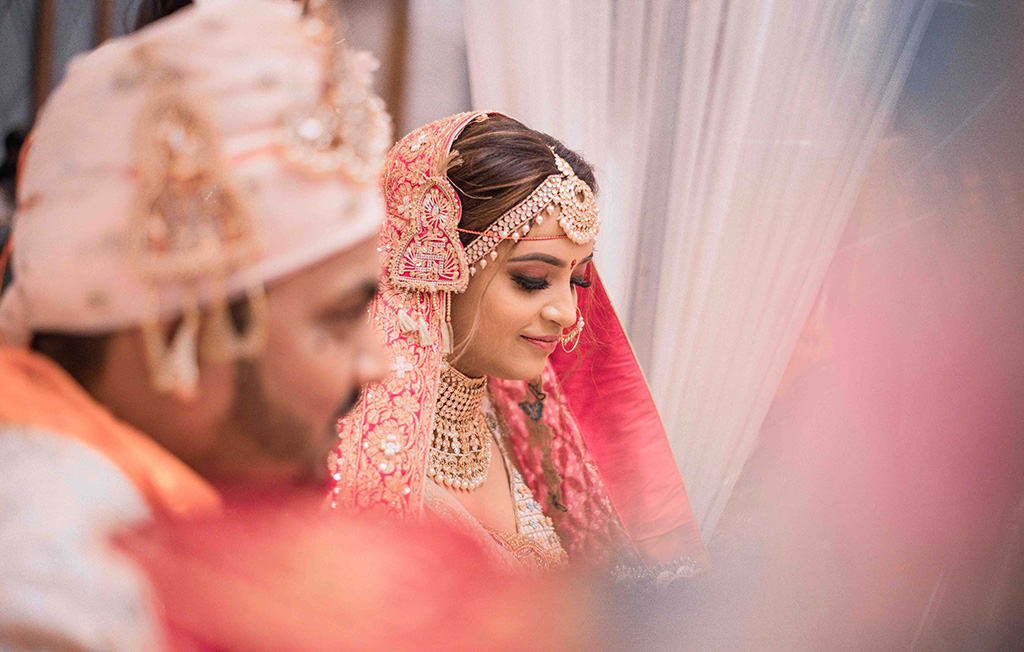wedding photography is an art form that requires a delicate balance of technical expertise, creativity, and emotional intelligence. It is about telling a story through images—capturing the most special moments of a couple’s life as they commit to one another. Wedding photography has evolved over the years from the traditional posed portraits to more natural, candid, and artistic images, and photographers today are expected to capture a wide variety of moments, emotions, and styles. In this extensive guide, we’ll discuss the best ways to approach wedding photography, including preparation, technique, styles, key moments to capture, editing, and tips for photographers.
1. The Importance of wedding photography
Wedding photography holds significant value for couples. It is not just about taking pictures; it’s about capturing memories that will last a lifetime. The photographs of a wedding day become part of a family’s history—passed down for generations. Wedding photos immortalize the couple’s love, family traditions, and the joy of celebrating one of life’s most significant milestones.
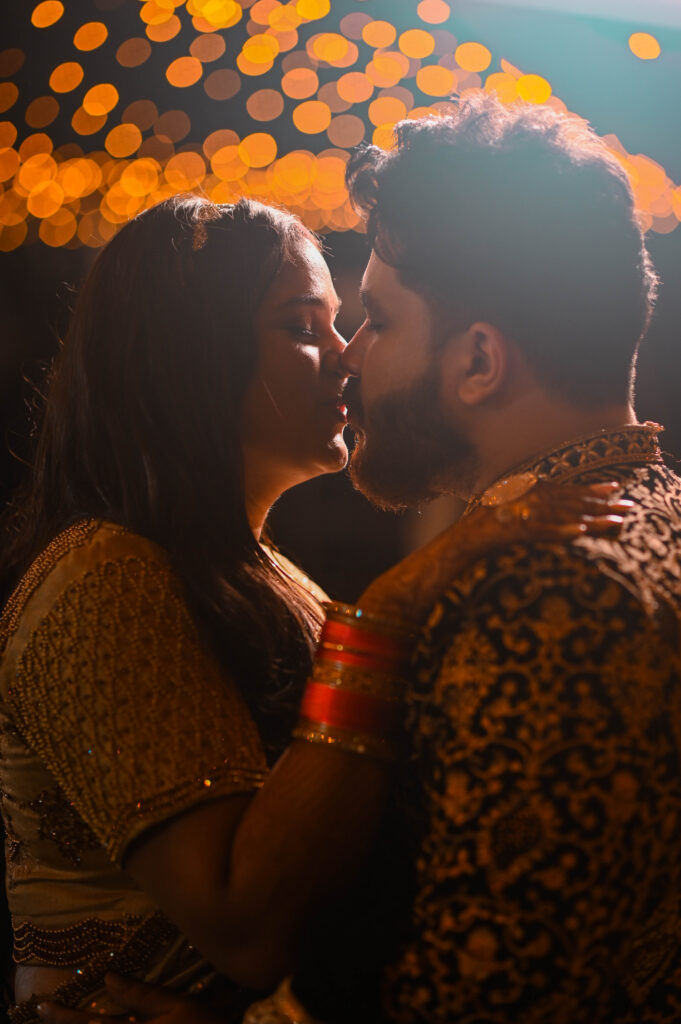
2. Pre-Wedding Preparation wedding photography
Successful wedding photography begins long before the big day. Preparation is critical for ensuring everything goes smoothly.
A. Meeting with the Couple wedding photography
Before the wedding, it is essential to have a detailed consultation with the couple. This is an opportunity to understand their vision, preferences, and the overall feel of the wedding. Some couples prefer more formal and traditional shots, while others may lean toward a more candid and artistic style.
Questions to ask during this meeting include:
- What is the overall theme or style of the wedding (e.g., classic, rustic, boho, modern)?
- Are there any specific moments or people they want to focus on (e.g., the first look, family portraits)?
- Do they have any specific photo locations or backdrops in mind?
B. Scouting the Venue wedding photography
Visiting the wedding venue ahead of time allows the photographer to familiarize themselves with the lighting, space, and potential photo opportunities. It is essential to know where the ceremony will be held, how much natural light will be available, and where to take portraits. Lighting is one of the most critical factors in wedding photography, and knowing where the sun will be during the ceremony or reception can help you plan your shots.
C. Creating a Shot List wedding photography
Creating a shot list is helpful for ensuring you capture all the essential moments, from the bride’s dress to candid reactions. While spontaneity is crucial for capturing genuine emotions, having a shot list helps avoid forgetting key moments.
Essential shots may include:
- Bride and groom getting ready
- First look
- Ceremony moments (e.g., vows, ring exchange)
- Family group shots
- Couple portraits
- Cake cutting
- First dance
- Candid moments of guests enjoying themselves
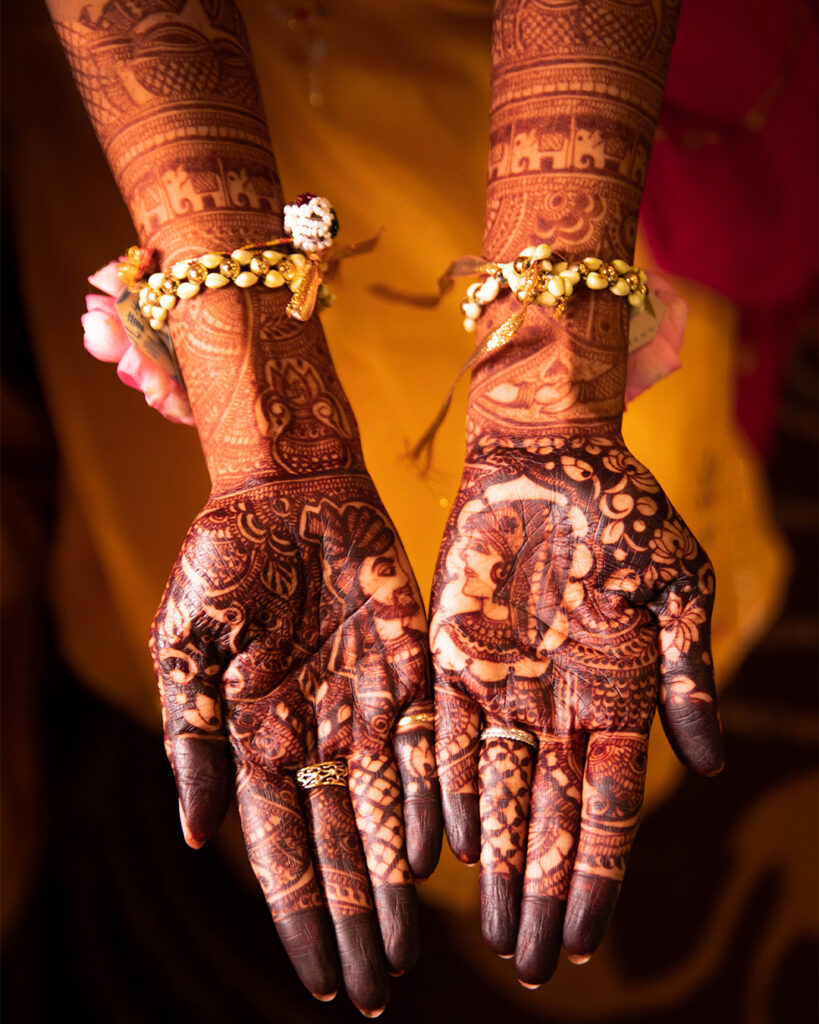
3. Understanding wedding photography Styles
Wedding photography styles have evolved significantly over the years, and different photographers may specialize in different approaches. Some of the most popular styles include:
A. Traditional/Classic wedding photography
Traditional wedding photography involves posed shots where everyone is looking at the camera. It focuses on capturing the major moments and group photos that showcase the bride, groom, and their families. These images are timeless and offer a classic feel.
B. Photojournalistic/Candid wedding photography
This style is about capturing moments as they naturally unfold. The photographer blends into the background and captures real emotions, such as laughter, tears, and candid interactions. The goal is to tell the story of the day in an unobtrusive way, focusing on the raw emotions and atmosphere of the event.
C. Fine Art wedding photography
Fine art wedding photography takes a more creative and artistic approach. These photos often have a dreamy, ethereal quality and may include more stylized compositions, soft lighting, and an emphasis on aesthetics. The photographer focuses on beauty, creating images that are not only meaningful but also visually stunning.
D. Modern/Contemporary wedding photography
Modern wedding photography blends a mix of candid shots, posed photos, and sometimes even experimental techniques. It often incorporates elements of fashion photography, with dynamic compositions and bold use of lighting. The focus is on creating a stylish and fresh look.
E. Documentary wedding photography
Documentary wedding photography focuses on telling the complete story of the wedding day, from the bride and groom’s preparations to the final moments of the reception. This style captures the event as it happens, with minimal direction, and aims to create a narrative.

4. Key Moments to Capture wedding photography
Wedding photography isn’t just about snapping random photos; it’s about being present at the right time and capturing those pivotal moments. Some key moments that every wedding photographer should focus on include:
A. Getting Ready wedding photography
The getting ready moments are filled with emotion and anticipation. Capturing the bride and groom in their private moments—whether it’s the bride putting on her dress or the groom adjusting his tie—adds a personal touch to the wedding album. Don’t forget to capture the details, such as the bride’s shoes, jewelry, and the wedding dress before it’s worn.
B. The First Look wedding photography
The first look between the bride and groom is often a deeply emotional moment. It’s a great opportunity to capture genuine reactions. Depending on the couple’s preferences, this moment can be intimate and private or a more public event, like during the ceremony.
C. Ceremony wedding photography
The ceremony is the heart of the wedding day, and it is vital to capture key moments, such as:
- The couple walking down the aisle
- Exchanging vows and rings
- The kiss
- The first announcement as a married couple
- Guest reactions
D. Reception wedding photography
After the ceremony, the reception is filled with fun, laughter, and celebration. Key moments to photograph include:
- The couple’s grand entrance
- The first dance
- Speeches or toasts
- Cake cutting
- Dancing and mingling with guests
- Any cultural or special traditions (e.g., bouquet toss, garter removal)
E. Candid Guest Reactions wedding photography
The moments between guests can often be the most genuine and heartfelt. Capture the guests’ reactions during speeches, the ceremony, and while they enjoy themselves on the dance floor.
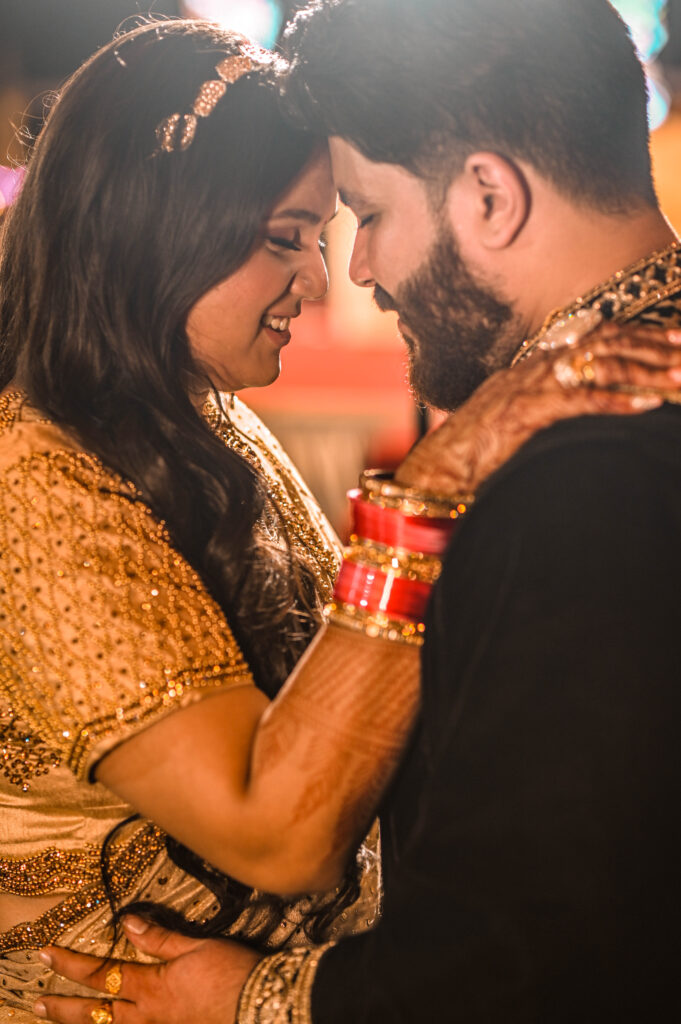
5. Lighting in wedding photography
Lighting is one of the most critical aspects of wedding photography. Great lighting can transform an ordinary shot into something extraordinary, while poor lighting can make even the most picturesque scene look lackluster.
A. Natural Light wedding photography
When possible, use natural light. It is soft, flattering, and generally more forgiving. Outdoors, golden hour (the hour just before sunset) provides soft, warm light that is perfect for portraits.
B. Artificial Lighting wedding photography
In situations where natural light is insufficient (e.g., indoor ceremonies or receptions), artificial lighting may be necessary. Use a combination of on-camera flash and off-camera lighting to achieve soft, balanced illumination. Avoid harsh, direct flashes, which can create unflattering shadows.
C. Backlighting wedding photography
Backlighting, or shooting with the light source behind the subject, can create stunning effects, especially during the ceremony or portraits. When done right, backlighting can produce a soft halo effect around the couple and give a dreamy atmosphere to the photos.
6. Posing and Directing wedding photography
While candid moments are essential, posed photos are also an integral part of wedding photography. Posing requires a balance between directing the couple to ensure they look natural and not overly stiff.
A. Couple Poses wedding photography
For couple portraits, keep the poses intimate and relaxed. Avoid stiff poses and encourage the couple to interact with each other, whether through touching, holding hands, or sharing a laugh.
B. Group Shots wedding photography
When taking group shots with family and friends, ensure everyone is positioned well. Keep the shots dynamic by arranging people in layers (i.e., some standing, some seated, etc.). Avoid overcrowding the frame and keep the focus on the couple.
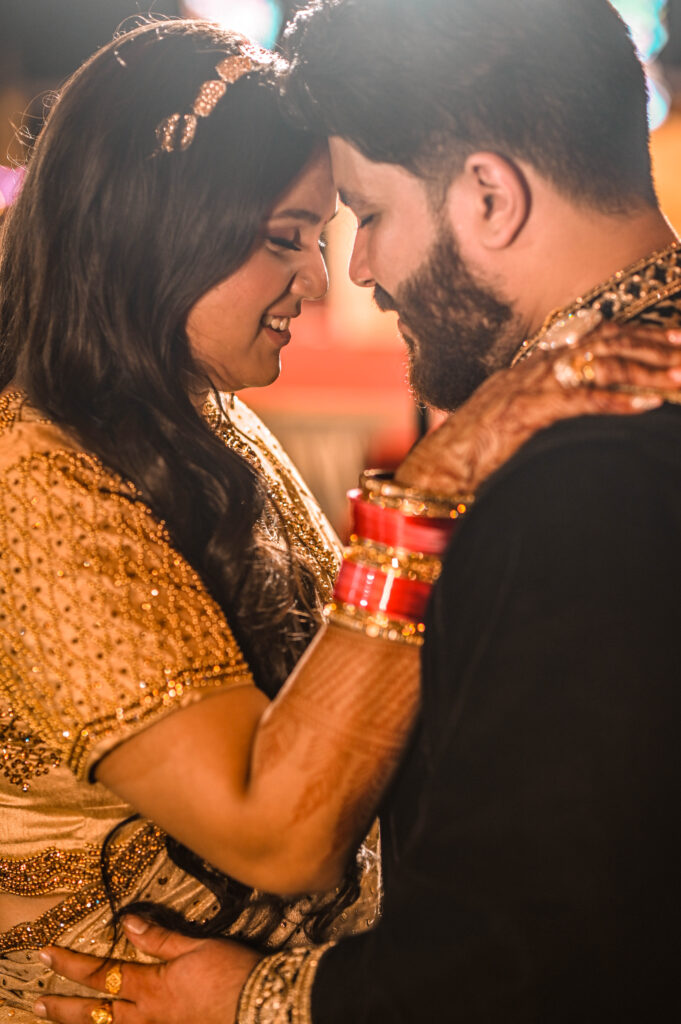
7. Post-Processing and Editing wedding photography
After the wedding day, post-processing is crucial for creating polished, consistent, and beautiful images. The editing style should match the couple’s preferences and the overall vibe of the wedding.
A. Consistency wedding photography
Use a consistent editing style across all the photos. Whether it’s a light and airy look, moody tones, or a more traditional approach, consistency is key to creating a cohesive wedding album.
B. Retouching wedding photography
Retouching should be done carefully, enhancing the image while still maintaining the natural look. Remove blemishes, adjust exposure, and fine-tune colors, but avoid over-editing. The goal is to make the couple look their best without making them look unnatural.
C. Albums and Prints wedding photography
After the wedding, offer the couple the opportunity to order an album or prints. Wedding albums are a beautiful way to preserve memories, and offering a selection of prints allows couples to display their favorite images in their home.
8. Tips for Wedding Photographers wedding photography
- Be Prepared: Always bring backup equipment, such as extra cameras, lenses, and memory cards.
- Be Unobtrusive: Try to blend into the background during important moments to avoid drawing attention to yourself.
- Stay Organized: Keep track of the shot list and timeline so that you don’t miss key moments.
- Stay Calm and Flexible: Weddings are often fast-paced, and things may not always go as planned. Stay calm, adapt to changes, and continue shooting.
wedding photography: The Positives and Negatives
Wedding photography is one of the most sought-after branches of photography, providing an opportunity for photographers to capture one of the most important days in the lives of many couples. The work involved is both challenging and rewarding, but it also comes with its share of benefits and drawbacks. In this detailed explanation, we will explore both the positives and the negatives of wedding photography to provide a comprehensive view of what the profession entails.

I. The Positives of wedding photography
1. High Demand and Job Stability wedding photography
One of the main positives of wedding photography is the high demand for services. Weddings are significant events for most people, and every couple wants their special day captured. As a result, wedding photographers are often busy year-round, especially during peak wedding seasons. This demand ensures a steady flow of work for those who specialize in wedding photography.
In many cases, experienced wedding photographers find themselves booked months or even years in advance, offering a level of job stability that some other types of photography may not provide. For those looking to build a solid career, wedding photography presents an attractive option.
2. Creative Expression wedding photography
Wedding photography is an art form, and it provides photographers with a great deal of room for creative expression. Every wedding is different, and the photographer has the opportunity to experiment with various styles, angles, and compositions. A wedding photographer might capture a mix of posed shots, candid moments, and stunning portraits, giving them the opportunity to demonstrate their technical skills and creativity.
Photographers can also explore different photographic styles such as photojournalistic, fine art, traditional, and modern wedding photography. Each wedding presents a new challenge, and it is exciting to approach each one with a fresh perspective. This freedom to experiment and express one’s artistic vision is one of the most rewarding aspects of wedding photography.
3. Emotional Rewards and Personal Satisfaction wedding photography
Wedding photography is an emotionally fulfilling career. Being part of a couple’s special day and capturing the joy, love, and tears of family members creates a sense of personal satisfaction. It’s incredibly rewarding to see the happiness in a couple’s eyes when they receive their wedding photos, knowing that the work you’ve done will be cherished for a lifetime.
Photographers often form emotional connections with couples as they document some of the most intimate moments of their lives. This can be an uplifting and gratifying experience, particularly when the couple is overjoyed with the photos.
4. Opportunities for Networking and Word-of-Mouth Referrals wedding photography
Wedding photographers often have the chance to network with other professionals in the wedding industry, including event planners, florists, venues, and other vendors. These relationships can lead to new business opportunities and valuable connections.
Additionally, satisfied clients frequently refer the photographer to their family, friends, and colleagues who are getting married. Wedding photography thrives on word-of-mouth marketing, which is one of the most effective ways to grow a business. As photographers capture more weddings, they build a reputation that leads to future bookings and referrals.
5. Flexible Work Schedule wedding photography
As a wedding photographer, there is often the flexibility to choose when and where to work. Unlike a 9-to-5 job, wedding photographers typically have control over their schedules, allowing them to balance their work and personal life. They can also choose whether to work full-time or part-time, depending on their preference and availability.
Though weekends are the primary workdays, the fact that weddings are often planned months or even a year in advance gives photographers time to plan their calendar and fit in other projects or time off when necessary.
6. High Earning Potential wedding photography
Weddings are often large-scale events, and couples are willing to pay top dollar for high-quality photography services. For experienced wedding photographers with a strong portfolio, there is a significant opportunity for earning high fees. The price for wedding photography services can range from a few thousand dollars to tens of thousands for high-end or celebrity weddings.
In addition to the fees paid for the wedding day itself, photographers can also earn extra income by offering packages for engagement photos, albums, prints, and more. Over time, as photographers gain a reputation and build a portfolio, they can charge higher rates, creating a lucrative career in wedding photography.
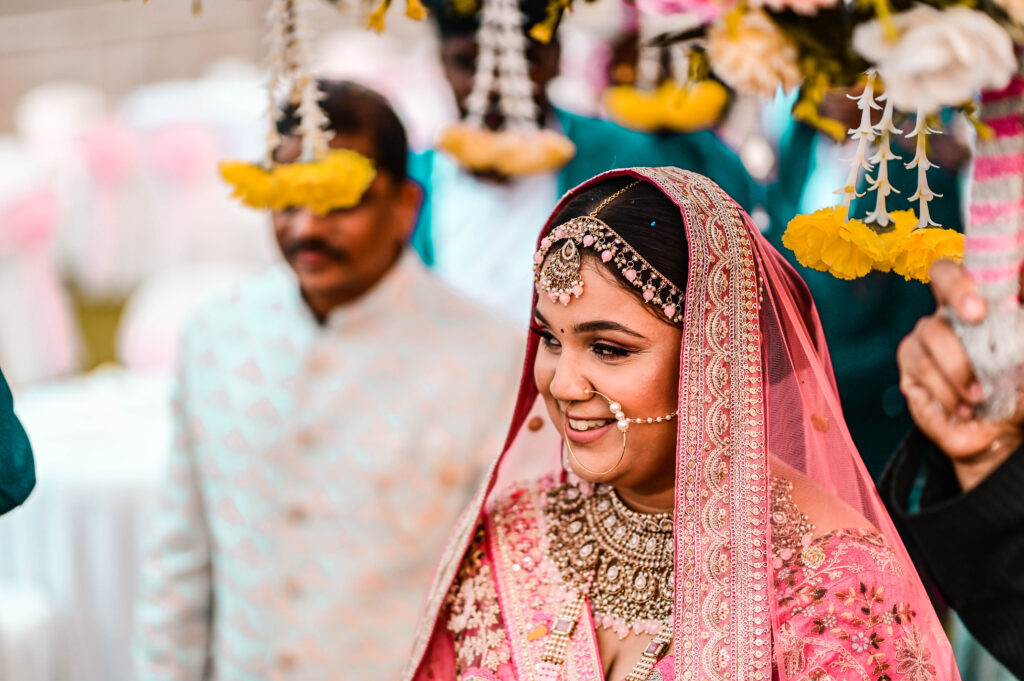
II. The Negatives of wedding photography
1. High Stress and Pressure wedding photography
While wedding photography can be emotionally rewarding, it is also a high-pressure job. Weddings are once-in-a-lifetime events, and the expectations from the couple, family, and friends are often immense. A photographer is responsible for capturing key moments without fail, and any missed shot or technical failure can be disastrous. There is little room for error, and the pressure to deliver perfect images can be overwhelming.
Weddings are also fast-paced events with tight timelines. Photographers must be ready to switch between different types of shots—getting ready shots, ceremony moments, candid reactions, group photos, and reception pictures—often with very little time to set up between. The need to be constantly on alert and to capture every important moment can result in burnout and stress, especially for solo photographers who are handling everything on their own.
2. Physical Demands and Long Hours wedding photography
Wedding photography requires a lot of physical energy. Photographers are often on their feet for many hours, moving from one location to another, adjusting their camera settings, climbing to high vantage points for creative shots, and carrying heavy equipment. Weddings can last for 8-12 hours or even longer, which means photographers work long hours without breaks.
It’s not uncommon for wedding photographers to work from early in the morning for bridal preparation to late at night during the reception. The physical toll that long hours, combined with heavy equipment, can take on the photographer’s body can lead to fatigue and exhaustion.
3. Unpredictable Situations wedding photography
Weddings are complex events, and things rarely go exactly as planned. Whether it’s last-minute schedule changes, unexpected weather conditions, or technical difficulties with equipment, wedding photographers must constantly be prepared for the unexpected. They must adapt quickly to last-minute changes and ensure that they can still capture the key moments.
Photographers also face unpredictable reactions from guests and the couple. For instance, if a guest decides to step in front of the photographer during a crucial shot or if a couple becomes camera-shy, it can interfere with the quality of the photos. The unpredictability of these situations can be frustrating and stressful, especially when there are high expectations.
4. Emotional Strain and Difficult Clients wedding photography
Dealing with emotional clients can be challenging. Weddings can be extremely emotional events, and sometimes, the pressure of the day can lead to tensions between the couple, their families, or the photographer. If expectations aren’t met or the couple is dissatisfied with certain photos, it can lead to stress, difficult conversations, or even conflicts.
Photographers often have to manage demanding clients who may request multiple changes to the shoot, the timeline, or the final images. Wedding photographers must maintain a professional demeanor at all times, even when clients are upset or unhappy with aspects of the day or photos.
5. High Competition and Market Saturation wedding photography
As wedding photography is a popular and lucrative field, the market is often saturated with photographers. New photographers entering the industry may struggle to find clients, particularly in highly competitive areas where many photographers are offering similar services at competitive prices.
To stand out, wedding photographers must work hard to build their brand, improve their portfolio, and differentiate themselves in a crowded market. This often requires significant time and effort spent on marketing, networking, and constantly improving their skills to stay relevant.
6. Equipment Costs and Maintenance wedding photography
Wedding photography involves substantial investment in equipment, including cameras, lenses, flashes, lighting gear, and accessories. High-quality equipment is necessary to ensure the best results, but it can be expensive. A single lens can cost thousands of dollars, and keeping up with new technology requires continuous investment.
Photographers must also account for regular maintenance and repairs, which can add additional costs. Backup equipment is crucial in case something goes wrong, and this adds to the overall expenses of running a wedding photography business. These ongoing costs can be overwhelming for new photographers or those struggling to make ends meet.
7. Lack of Work-Life Balance wedding photography
Wedding photographers typically work on weekends, meaning they are often unavailable during holidays, weekends, and family events. While the flexibility to schedule shoots can be a positive, it also means that wedding photographers often sacrifice time with family and friends. Their social lives can be limited, and they may have to miss important events, birthdays, or vacations due to wedding bookings.
Over time, the intense work schedule can lead to burnout, especially for those who are juggling other photography projects or working multiple weddings per week.
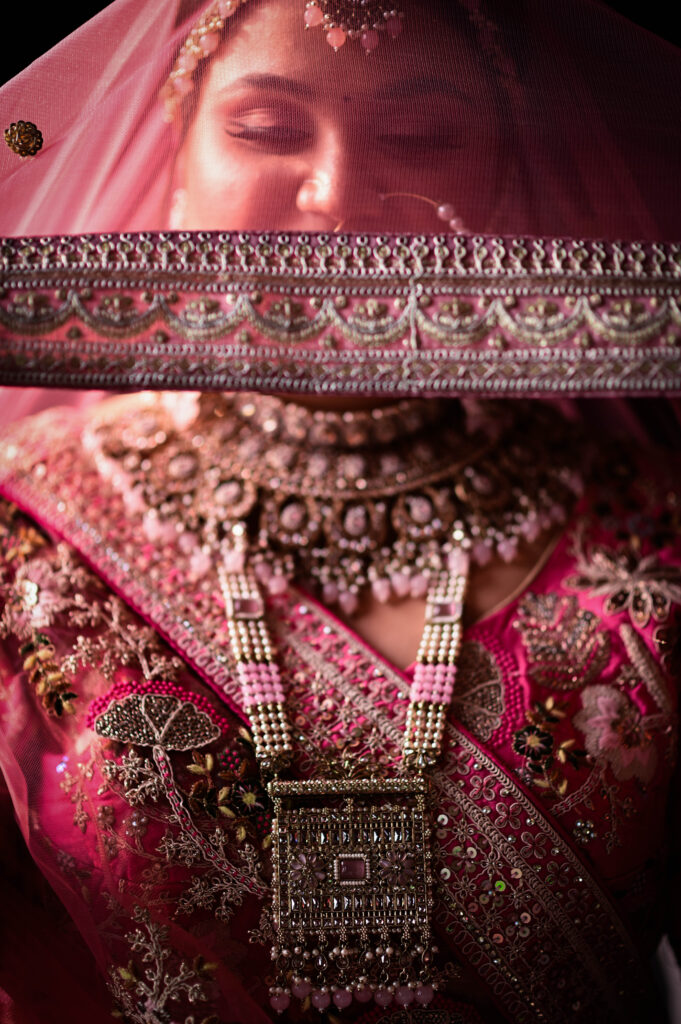
III. Conclusion: Weighing the Pros and Cons of wedding photography
Wedding photography is a career that brings both incredible rewards and significant challenges. On the positive side, it offers creative freedom, emotional satisfaction, networking opportunities, and financial stability. However, the stress, long hours, unpredictable situations, and emotional strain can be tough to navigate, particularly for new photographers who are just starting in the industry.
For those who are passionate about photography and enjoy capturing significant moments, wedding photography can be a deeply fulfilling career. However, it is essential for photographers to be aware of the challenges involved and be prepared for the demanding nature of the work. By developing strong skills, managing expectations, and building a solid reputation, wedding photographers can succeed in this dynamic and rewarding field.
Conclusion wedding photography
Wedding photography is an incredibly rewarding profession, offering the chance to preserve memories of one of life’s most joyous occasions. By preparing ahead of time, understanding the couple’s vision, mastering your technical skills, and capturing both the big moments and subtle emotions, you can create a wedding album that will be cherished for years to come. Wedding photography is not just about taking photos—it’s about telling a story and immortalizing one of the most important days in a couple’s life.
